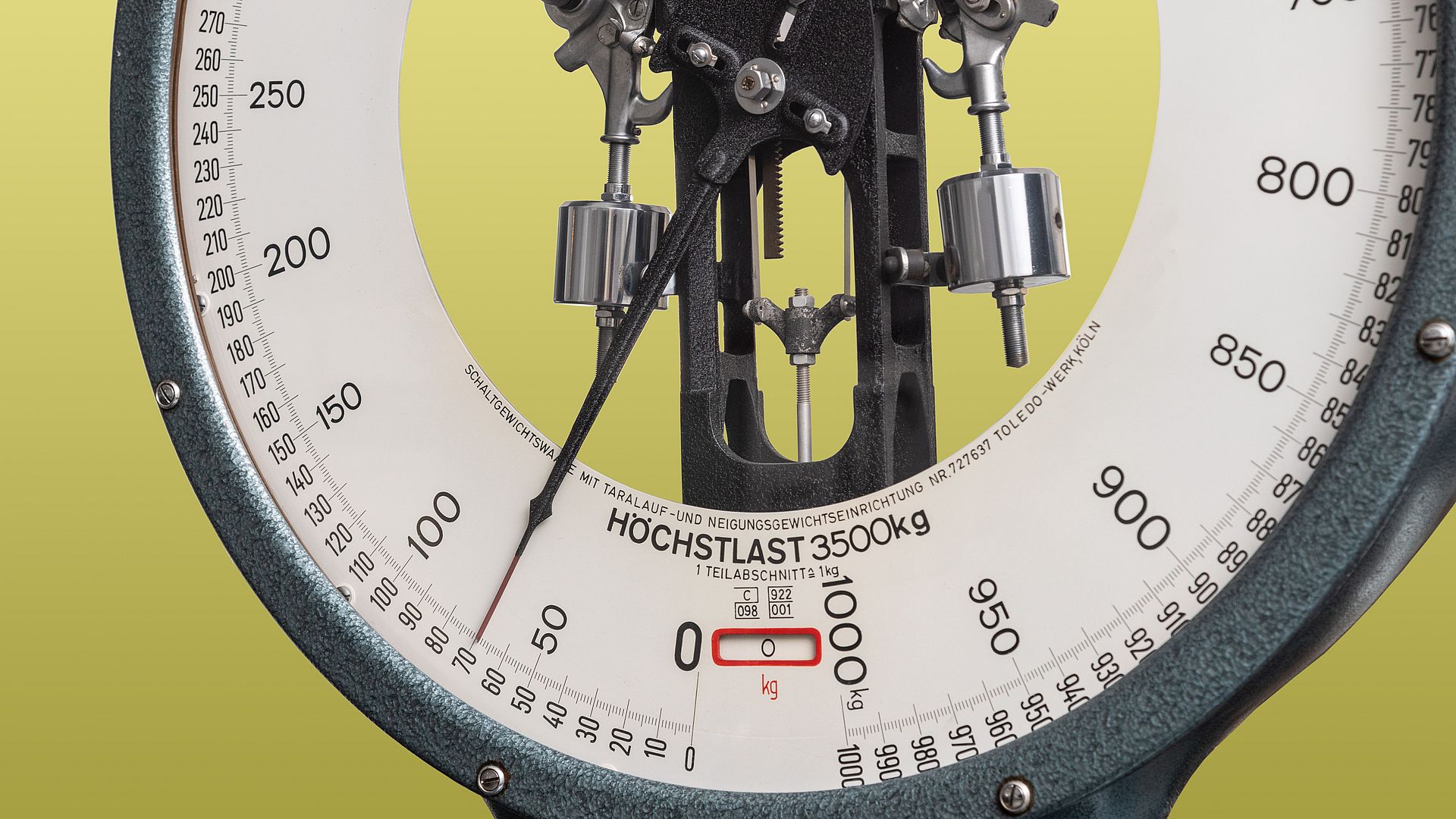
Photo: Deutsches Museum | Christian Illing
The Natural Sciences
Measures and Weights – the Diversity of Units
The distance to work, how much we weigh, and the time that goes by day after day: measurements are everywhere! Learn more about the fascinating history of units, measures and measuring instruments.
The History of Measuring and Weighing
Weights and measures play a vital role in almost all areas of human life. And in order to make any measurement, we need a corresponding unit of measure. Specific units of length, volume and mass existed as far back as the earliest advanced civilisations. For centuries, however, these units varied from country to country and from ruler to ruler – a major problem, especially for interregional trade.
It was not until the French Revolution that a uniform international system of measurement (SI) was introduced: the prototype kilogram and prototype metre were born. Yet it took almost another 200 years before these SI units were recognised as the international standard.
Today, the same measurements are used around the globe and are the most important prerequisite for any kind of economic activity. Since 2019, all base units of the SI system are derived from physical constants.
299,792,458The fractions of a second it takes for light to travel one metre in a vacuum.
7 The number of base units in the International System of Units (SI).
View inside the Measures and Weights exhibition. Photo: Deutsches Museum
Exhibition Themes
- The Measurement of Length
Numerous measurement scales and length-measuring instruments document the variety of measuring systems used until the introduction of the prototype metre in 1889. - The Measurement of Volume
The establishment of municipal supply networks in the 18th and 19th centuries necessitated the installation of volume-measuring instruments for gas and water. Various calibrated measurements of capacity were used to represent the measurement of volume at the time. - Areometry
Hydrometers are used to measure the density of substances or the specific gravity of liquids and solids. A large number of these devices can be seen in the exhibition. - Weighing
The oldest measuring instrument is probably the balance. Its development is documented with examples ranging from the simple beam balance to a metering device with punched-card control.
View Inside the Exhibition
The new Kilogram
The silicon sphere has a diameter of exactly 9.37 centimetres, is cut from a single crystal and has been so precisely finished that it can justifiably be called the roundest sphere in the world. It has been used to define the weight of a kilogram since 2019. In this film, Alexander Lucas tells us more about the new kilogram and explains why mankind has agreed to use common units. The film is currently only available in German.
Tip: the “new kilogram” can be found in the History of the Museum exhibition on Level 1.
The silicon sphere has a diameter of exactly 9.37 centimetres, is cut from a single crystal and has been so precisely finished that it can justifiably be called the roundest sphere in the world. It has been used to define the weight of a kilogram since 2019.
Facts
- 190 sqm exhibition area
- Around 200 exhibits
- Approx. 30 interactive activity stations
- The exhibition is on Level 3
Any Questions?
![]()
Dr. Daniela Schneevoigt
Curator
Department of Physics, Geophysics, Geodesy, Weights and MeasuresMuseumsinsel 1
80306 Munich
Fax +49 89 2179 99350
Email d.schneevoigt@deutsches-museum.de
Do you have organizational questions?
Cornelia Schubert
Assistance to department heads, main department heads and curators
Susanne Schmölz
Assistance to department heads, main department heads and curators








